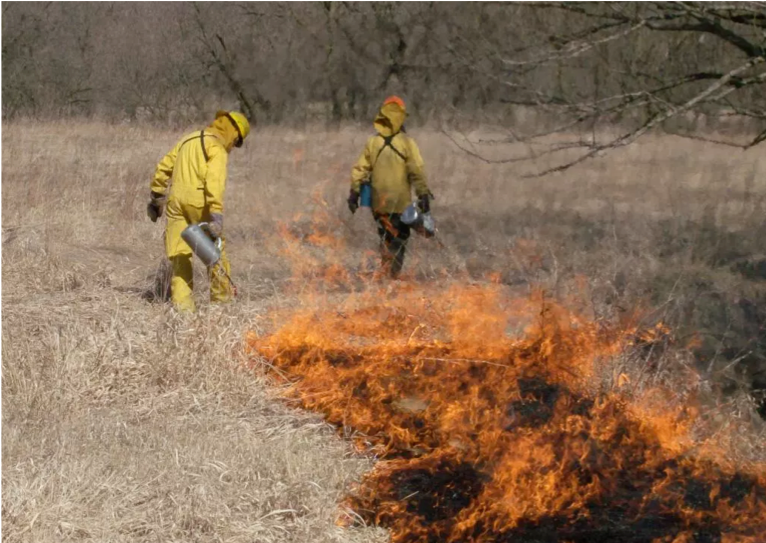 Fire is critical for reducing catastrophic wildfires and sustaining ecosystems. Yet the technology to support fire ignition and monitoring remains stagnant. Fire personnel operate under enduring risk in a rapidly evolving context, using drip torches to ignite fires. Alternative forms of support like trucks, helicopters, or planes are costly and often unavailable. Unmanned Aerial Systems (UASs) have been used for fire monitoring, but it is only recently that the project team has pioneered the development of a UAS that closes the gap between observation and ignition. The developed UAS can aid in prescribed fire ignition, transforming the way stakeholders manage ecosystems by enabling prescribed fires in areas where it is currently too costly or dangerous.
Fire is critical for reducing catastrophic wildfires and sustaining ecosystems. Yet the technology to support fire ignition and monitoring remains stagnant. Fire personnel operate under enduring risk in a rapidly evolving context, using drip torches to ignite fires. Alternative forms of support like trucks, helicopters, or planes are costly and often unavailable. Unmanned Aerial Systems (UASs) have been used for fire monitoring, but it is only recently that the project team has pioneered the development of a UAS that closes the gap between observation and ignition. The developed UAS can aid in prescribed fire ignition, transforming the way stakeholders manage ecosystems by enabling prescribed fires in areas where it is currently too costly or dangerous.
The goal of this proposal is to advance UAS-based technology, practices, and understanding to reduce the risk of human exposure to fire while increasing firefighters’ effectiveness and efficiency in fire management. The vision addresses key simplifying contextual assumptions about the number of human and robots involved, the attention that human and robot can expect from each other, and the scope of collaboration between robot and human. These assumptions do not always hold in the harsh, complex, and dynamic fire context, and more generally they capture fundamental co-robotic challenges.
Impacts
Over 50 fire managers throughout the Midwest have been exposed to or trained on our technology for prescribed ignitions. In addition we developed the foundational technology required for full deployment of the system, and shared this through participation in numerous conferences centered on fire research in addition to robotic, cyber-physical system, and human-robot interaction conferences. This technology has been commercialized by the PIs.
Acknowledgements
This work funded by NSF-1638099.

